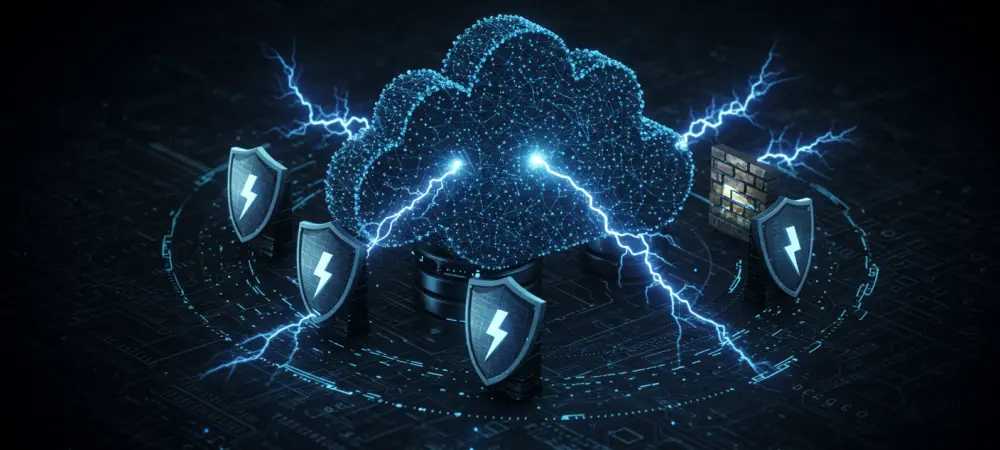I’m thrilled to sit down with Dominic Jainy, a seasoned IT professional whose expertise in artificial intelligence, machine learning, and blockchain has given him a unique perspective on emerging cybersecurity threats. Today, we’re diving into the evolving world of ransomware, focusing on a recent cloud-based attack in a Microsoft Azure environment by the threat actor Storm-0501. In this interview, we’ll explore the intricacies of this incident, the tactics used by the attackers, the broader implications for cloud security, and how organizations can better protect themselves in this shifting landscape.
Can you walk us through the key details of the recent ransomware attack by Storm-0501 in a Microsoft Azure environment?
Absolutely, Paige. This attack was a stark example of how ransomware is evolving into the cloud space. Storm-0501, a financially motivated group, compromised a large enterprise with multiple subsidiaries, each having its own Active Directory domain. They didn’t just target on-premises systems; they pivoted into the cloud, specifically two Azure tenants, to exfiltrate massive amounts of data and delete backups. Using cloud-specific tools and privileges, they essentially locked the victim out of recovery options by destroying critical resources before demanding a ransom. It’s a bold move that shows how attackers are adapting to hybrid environments.
What sets this cloud-based ransomware attack apart from the more traditional on-premises attacks we’ve seen in the past?
The big difference here is the exploitation of cloud features. Traditional ransomware often involves malware deployment on local servers or endpoints, encrypting files directly on those systems. In this case, Storm-0501 leveraged Azure’s own capabilities to rapidly steal data and delete resources at scale. The cloud’s speed and accessibility became a weapon—attackers could move faster and cover more ground than in a typical on-premises scenario. Plus, deleting backups in the cloud made recovery almost impossible for the victim, which isn’t always the case with local systems where physical backups might still exist.
How did Storm-0501 manage to navigate between on-premises systems and the cloud during this attack?
They were incredibly strategic. They started by gaining domain administrator privileges in the first tenant on-premises, using tools like Evil-WinRM for lateral movement. From there, they compromised an Entra Connect Sync server, which acts as a bridge between on-premises and cloud environments. This server allowed them to sync credentials and enumerate resources in the Azure tenant. They repeated a similar process in a second tenant, exploiting synced identities to escalate privileges. It’s a clear demonstration of how attackers can use hybrid infrastructure as a stepping stone to reach valuable cloud data.
Can you tell us more about Storm-0501 as a group and what drives their actions?
Storm-0501 is a financially motivated ransomware actor that’s been active since at least 2021. They’re opportunistic, meaning they don’t necessarily have ideological goals—they’re after money. Over the years, they’ve switched tactics and payloads multiple times, most recently using Embargo ransomware in 2024. They target a wide range of organizations, including schools and healthcare providers, likely because these sectors often have sensitive data but may lack robust security budgets. Their adaptability and focus on profit make them a persistent threat.
How did they exploit specific cloud features to carry out data theft and destruction in this incident?
Once they gained high-level access—specifically Global Administrator privileges in Azure—they had free rein. They assigned themselves the Owner role over all Azure subscriptions, which gave them control over critical resources. They used tools like AzCopy, a legitimate Azure command-line utility, to exfiltrate data from storage accounts to their own infrastructure. After stealing the data, they deleted the victim’s Azure resources en masse, ensuring no backups remained. For anything protected by immutable policies, they resorted to cloud-based encryption. It’s a devastating use of the cloud’s own tools against the victim.
Why do you think this attack represents a major shift in the ransomware landscape?
This incident marks a turning point because it shows ransomware isn’t just an on-premises problem anymore. Attackers like Storm-0501 are now fully embracing hybrid and cloud environments, where they can exploit scalability and speed to maximize damage. The ability to delete backups in the cloud before a victim even knows what’s happening raises the stakes significantly. It’s a wake-up call that traditional defenses aren’t enough when attackers can operate with cloud-native privileges and tools.
Do you believe other ransomware groups will follow in Storm-0501’s footsteps and adopt similar cloud-focused tactics?
I think it’s inevitable. Ransomware groups are quick to learn from each other’s successes. Storm-0501’s approach—using cloud infrastructure to exfiltrate data, delete backups, and encrypt what’s left—is highly effective and scalable. As more organizations move to hybrid or fully cloud-based systems, attackers will see these environments as prime targets. The barrier to entry isn’t even that high since many of the tools, like AzCopy, are built-in. We’re likely to see a wave of copycat attacks unless cloud security practices catch up fast.
What’s your forecast for the future of ransomware in cloud environments over the next few years?
I expect ransomware in the cloud to become a dominant threat. As businesses continue migrating to platforms like Azure, attackers will refine their tactics to exploit misconfigurations, weak access controls, and the sheer volume of data stored in these environments. We’ll likely see more automation in these attacks, with scripts designed to quickly identify and exfiltrate sensitive data. On the flip side, I hope this drives innovation in cloud security—better identity management, real-time monitoring, and stricter privilege controls will be critical. It’s going to be a race between attackers and defenders to see who adapts faster.

